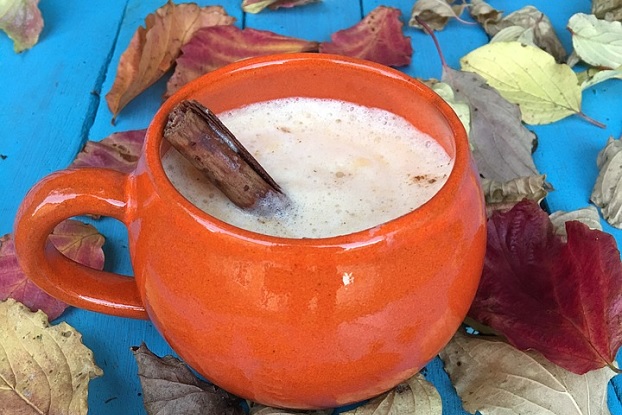
I love fall. I love sweater weather, I love crisp cool air. I especially love the advent of pumpkin spice season. And this autumn, I dare you to call me white for loving the warmth, spices, and foods that belonged to people of color before white people stole and colonized our lands.
pumpkin spice: cinnamon, ginger, cloves, nutmeg, allspice
In Colombo, Sri Lanka, there’s a neighborhood called Cinnamon Gardens — named for a plantation that stood there in the 18th century. The Cinnamon Hotel chain snakes through the country, Cinnamon Grand, Cinnamon Bey, even Cinnamon Wild Yala sitting on the edge of a wildlife gaming park. Sri Lankans are proud of their cinnamon, a natural crop with a violent history, in which Portuguese traders, Dutch “allies,” and British colonists used a combination of guns and debt to monopolize the cinnamon trade in my parents’ homeland.
“Cinnamon flavored my entire diasporic life, biting into flaking shards of its stick form in Ammi’s parripu curry…”
Cinnamon flavored my entire diasporic life, biting into flaking shards of its stick form in Ammi’s parripu curry and knowing that nearly all of the great American baked goods depend on its flavor. The main ingredient of a pumpkin spice latte is laced with the strength and sorrow of my people. Ground into sweetness, as a Sri Lankan American, I am brittle and fragmented, constantly losing pieces of myself. And when I am hardest, I can make any curry spicier, any dark place smell like home.
And that’s just part of the pumpkin spice story.
The same culprits (Portuguese, Dutch, British) monopolized South and Southeast Asian nutmeg through the spice trade. The same thing happened to ginger. Clove trees managed to escape total exploitation by the Dutch East India Company, due to the resilience of their roots (but not for lack of trying on the part of the Dutch). And in the 15th century, Jamaican allspice had the horror of meeting Christopher Columbus.
‘When we bemoan the pumpkin influx as a “white” or “American” trend, we rip history out from the ground beneath us.’
As for pumpkin? A squash native to the Americas? Who do you think grew that first, the Pilgrims? Think just a little further back. When we bemoan the pumpkin influx as a “white” or “American” trend, we rip history out from the ground beneath us. Indigenous, Native, and First Nations people cultivated pumpkins for centuries before introducing them to the white settlers. And you know how that shit goes…
It’s not pumpkin or pumpkin spice that’s the problem; it’s the commodification of our resources as somehow exotic when used in non-white foods and comfort when used in white foods. And when we mock certain foods as “white foods,” particularly in America, we’re capitulating to a lie — the lie that anything we eat in the diaspora isn’t touched and flavored by people of color. It’s the ahistorical denial of the complexities of the role of colonialism, slavery, and genocide in the spice trade. And it further snarls the delicate balancing act all diasporic people are forced to embody, in constantly having to understand their selves in relation to the trauma of separation from home and capitalist violence.
Maybe I’m just tired of having to explain myself for just liking things that taste good. I mean, look at vanilla. Somehow a rich brown bean, dark and sweet, become a symbol of whiteness to radical queer people of color, a symbol of boring sex, and even more boring cake.
“Look at vanilla. Somehow a rich brown bean, dark and sweet, become a symbol of whiteness…”
But here’s the history: when the Spanish and French colonizers could not figure out how to pollinate the vanilla plant after taking it from Mexico, an enslaved black youth (only 12 years old) named Edmond Albius figured out how to pollinate it by hand. It’s still how vanilla is pollinated today.
This is a crucial facet of how white supremacy operates: by taking color and making it look white. In turn, we as people of color often replicate that in our own language, practices, and ideologies. But saying no to capitalism doesn’t have to mean erasing how our bodies, tastes, and cultures have always underpinned the system.
The pumpkin spice latte is filled with the blood of indigenous peoples and people of color, but also their joy, their sweat, their labor and their love. We cannot let white consumerism take that away from us. Get it trending: #decolonizepumpkinspice. Fuck Starbucks and make your PSL at home.
Get your mother’s recipes for cinnamon curries and talk to your parents about their history. Read our history. Know our ancestors’ sacrifices. Mourn the oceans in between our homelands and us. Seep in the water that may be our only connections left with each other. Enjoy fall, enjoy pumpkin, and love the spice and spark of a people that still survives and thrives despite every attempt to extinguish and exterminate us.
And for fuck’s sake, don’t let white people make you feel guilty for indulging the complicated taste buds of your diasporic soul.
* * *
This post originally appeared on BGD, and it’s reposted here with permission. Sasanka Jinadasa is a page poet, a justice advocate, and hard femme. She is trying to avoid talking so much about mangoes in her writing because of the way they have been oversexualized and exoticized by the West, but still consumes them at exorbitant rates. Find her on Twitter @lankanfeminist.












